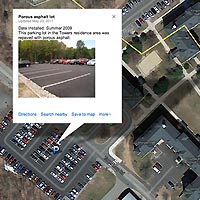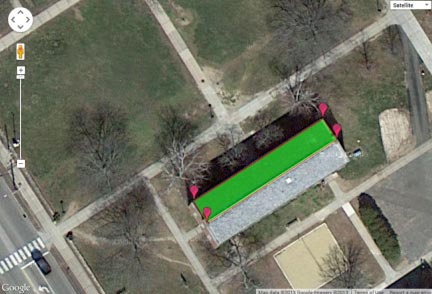
Step 7 - Estimating stormwater volume reduction
In many cases it may be beneficial to estimate how much stormwater you are keeping out of the system. This could be if: (a) your TMDL is for flow, not IC; (b) you are in a CSO area, or; (c) you want to wow your regulators and the public with measures of progress a little more exciting than “5 acres of pavement disconnected.”
If you keep track of the disconnections, though (see Tracking IC Reduction), this should be relatively easy. The only thing you need to add is rainfall.
The first step is to get an estimate of the area that you are going to disconnect. Luddites will enjoy taking these measurements the old fashioned way, with a tape measure. Those more technically inclined will enjoy using some online tools. One of our favorites is this one that uses Google Maps to allow you to measure the area of a shape. The tool is available here: http://www.daftlogic.com/projects-google-maps-area-calculator-tool.htm
So let’s say that half of the roof of this building will be disconnected from the stormwater system by redirecting the gutter downspouts to rain gardens. You simply click on the outline of the roof, and the tool calculates the area for you.

For our example, the area is 2,090 square feet.
Next, if these rain gardens are sized to contain one inch of runoff, we can estimate how much stormwater is being captured for this size event. No heavy math involved here-just a couple of steps (the 7.48 and 12 are just unit conversions):
So for our example,
Now you have an estimate of how much stormwater will be treated with your disconnection, for a one inch event. If you would like to get an annual estimate, you can multiply this value by the number of inches we get in an average year. For Connecticut, we average around 48 inches of precipitation per year. So again for our example, this is 1,303 gallons x 48 = 62,532 gallons. So as you can see, this one small disconnection makes a big difference over the long term.




